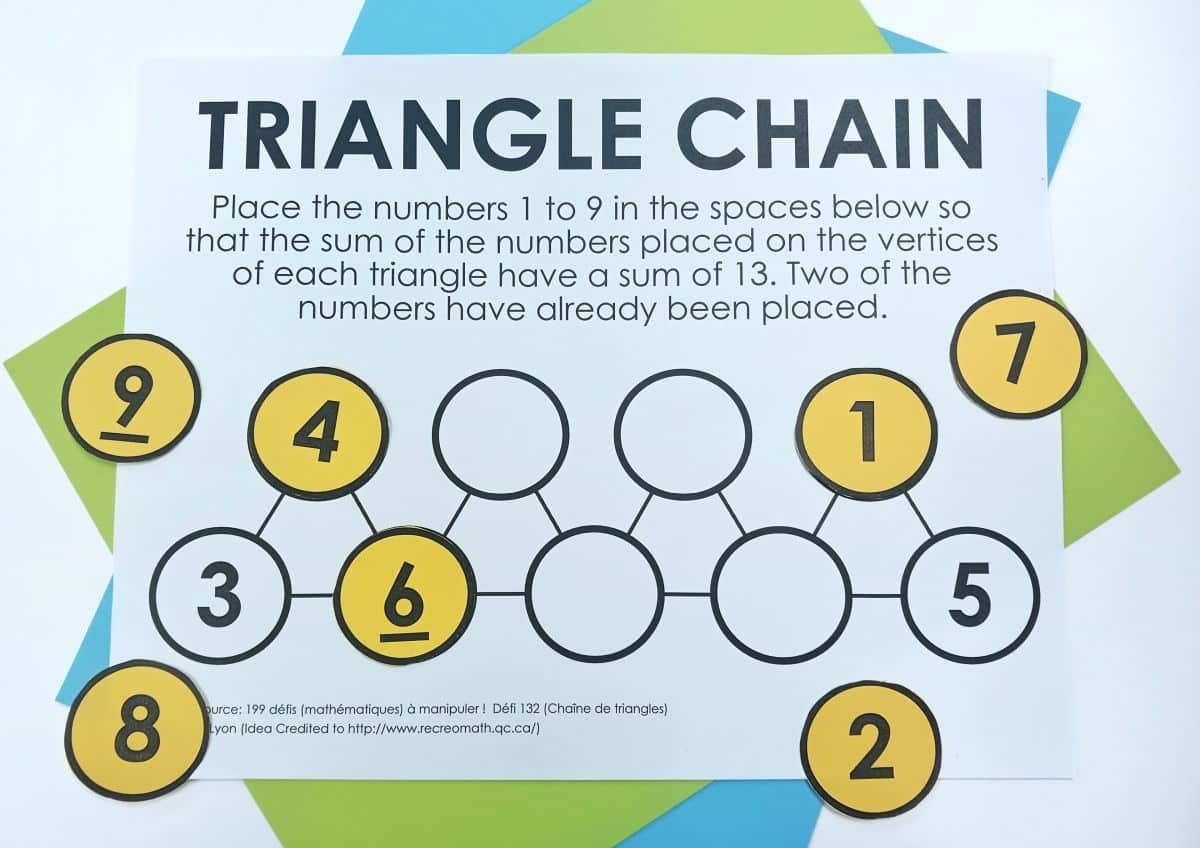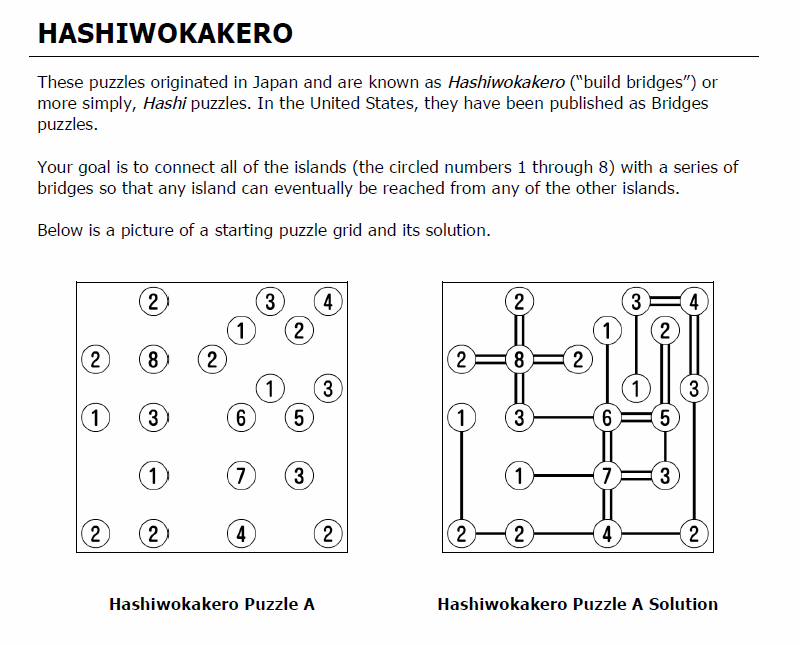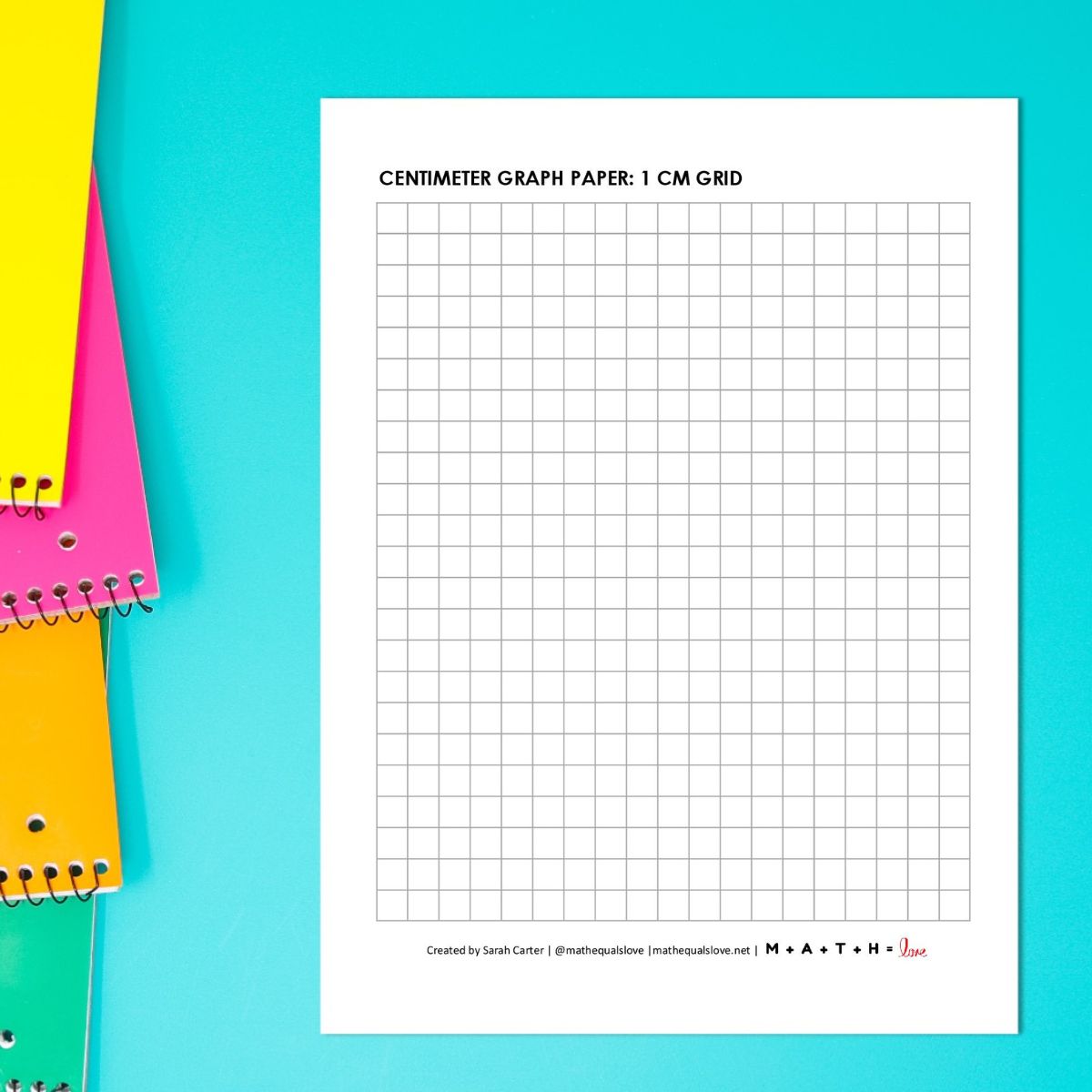Naming Polynomials Speed Dating Activity
This blog post contains Amazon affiliate links. As an Amazon Associate, I earn a small commission from qualifying purchases.
For years, I’ve had it in the back of my mind and on many a to do list to create a typed version of my naming polynomials speed dating cards to share!
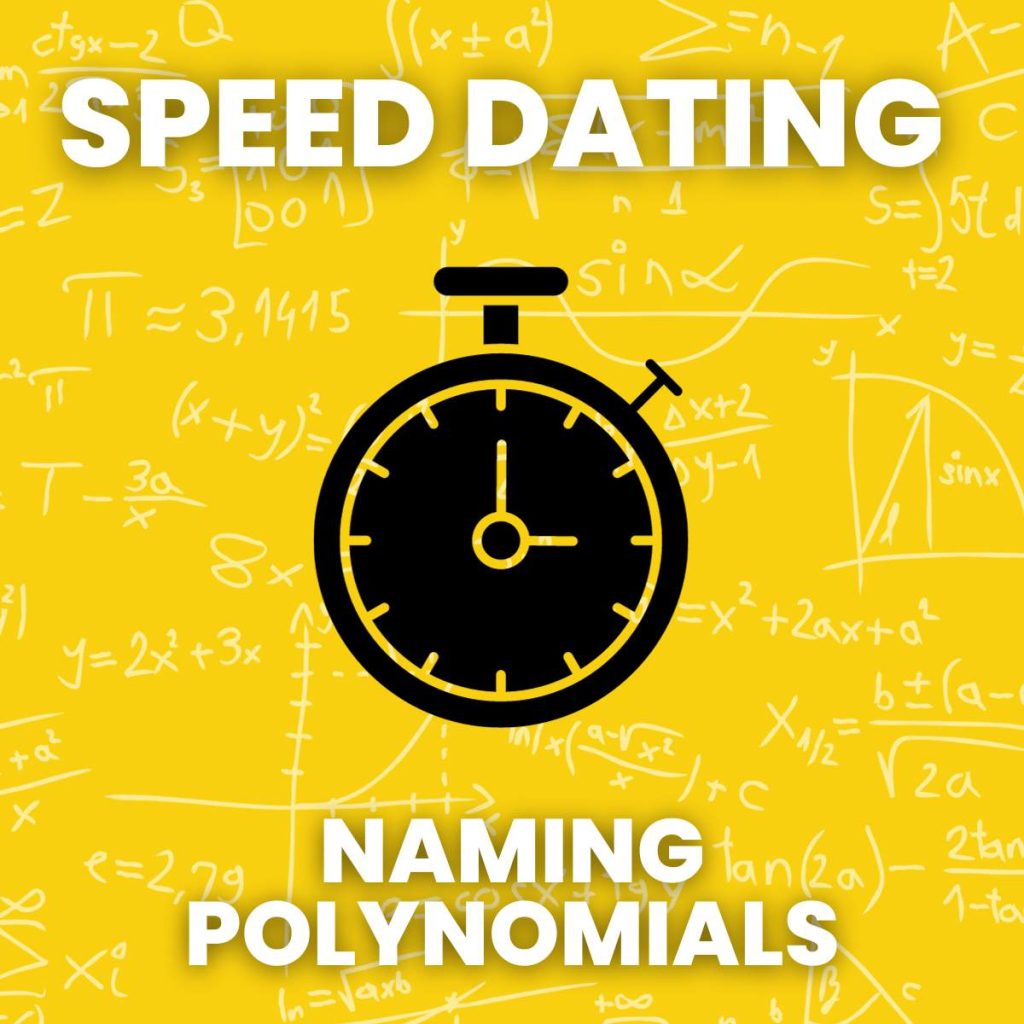
My first set was created with index cards. I wrote the polynomials on the front of the index cards with magic marker.
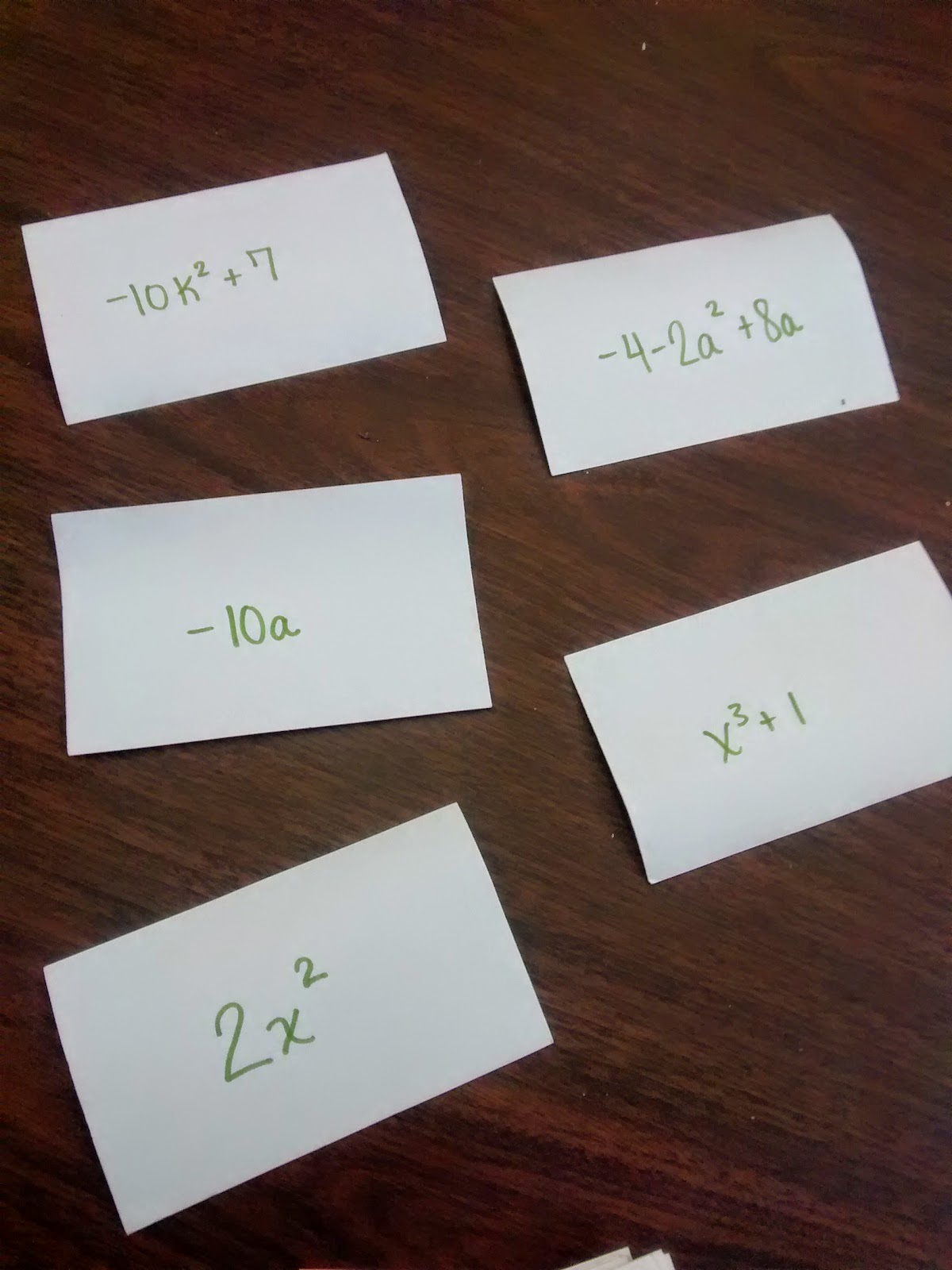

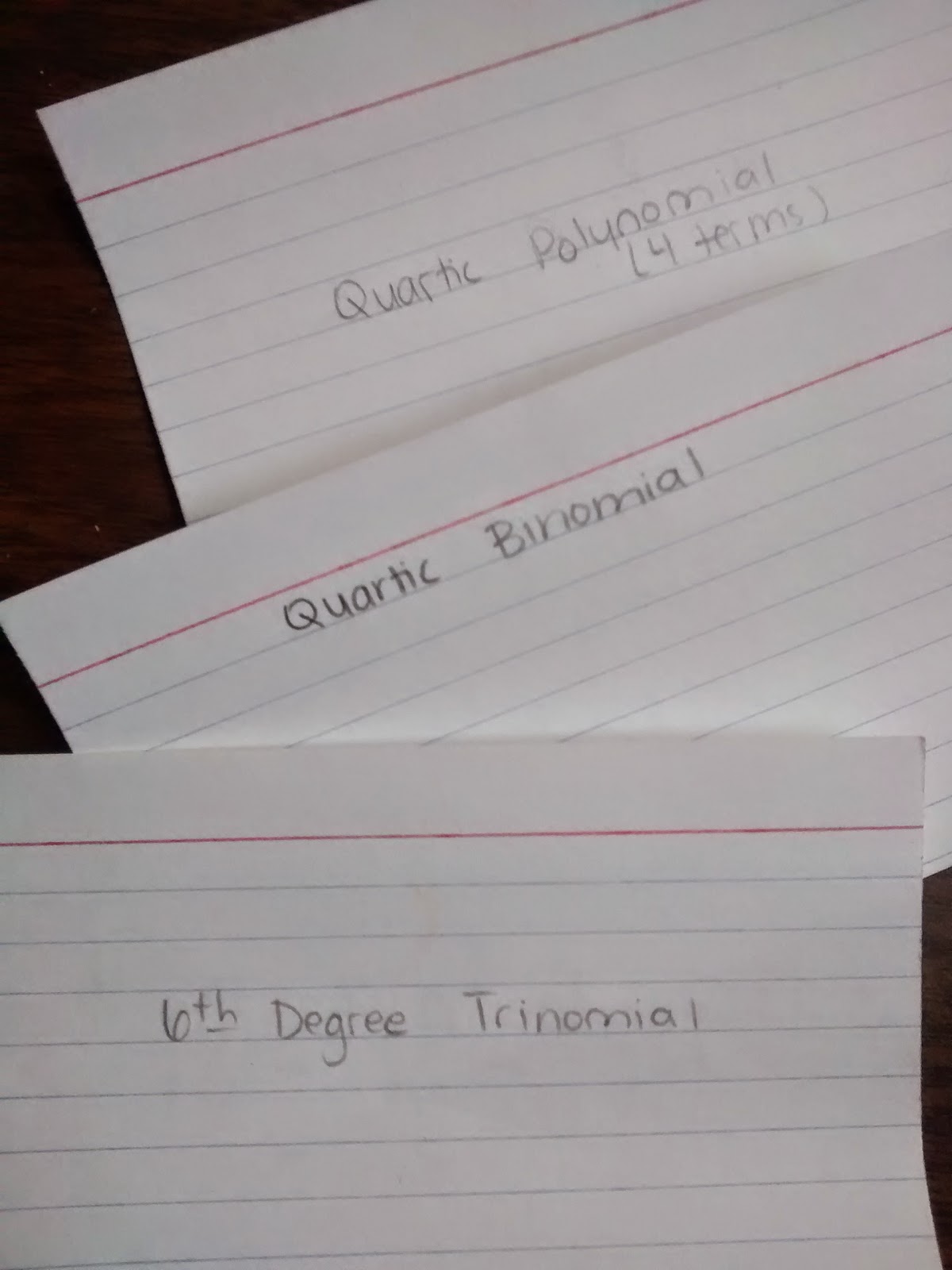
This specific set of cards made their debut way back when NPR came to visit my classroom. NPR even captured photos and audio of my students doing the naming polynomials speed dating activity if you want to take a listen!
On the back, I used pencil to lightly write the name of the polynomial. I did this in pencil to make it harder for students who might try to look through the card and read the answer!
So, what is speed dating? You might know it by its more traditional name of “Quiz Quiz Trade.” It’s one of my favorite activities for building students’ fluency with concepts that require very little calculation. To do a speed dating activity, you need a deck of cards with questions written on one side and answers written on the back.
In this case, the “questions” are polynomials, and the “answers” are the corresponding names of the polynomials. I always start my speed dating activities by passing one card out to each student question side up. I instruct them to work out the problem on their card and check their answer by flipping the card over. Usually at this point in our polynomials unit, we’ve only done a handful of examples in class. For some students, this might be their first attempt at naming a polynomial all by themselves.
Once all my students have had a chance to work out their own problem and check their answer, I then explain the rules of the activity.
The goal of speed dating is to get to know something about the other person as fast as possible and to exchange information in case you later decide you want to get to know them better. The goal of this activity is to figure out the name of the other person’s polynomial as fast as
possible, to exchange information (trade cards), and find a new partner to get more practice naming polynomials.
Usually, at this point, I model the activity with a student. Then, I have all my students stand up and pair up. In each pair, students hold their cards up to each other with the question side facing out and the answer facing them. Students take turns naming each other’s polynomial. If a student messes up, the other student often gives a hint or shows them the answer and helps them figure out where they went wrong. After both polynomials have been successfully named, students trade cards and go off in search of a new partner.
There are several things I LOVE about this activity.
1. Students are up and moving around. This automatically increases student engagement.
2. Students are interacting with students from all over the classroom – not just the students they normally sit by.
3. Students get immediate feedback. Plus, it’s peer feedback. If a student is struggling, hearing a peer re-teach part of the lesson can be a powerful thing. Students need to sometimes be reminded that I’m not the only teacher in the classroom. We can all learn from one another.
4. On top of getting immediate feedback, students also immediately get another chance to test out their new-found polynomial naming skills.
5. It’s one of the easiest activities for me to jump in as a teacher and participate alongside my students. If I have an odd number of students, I often participate myself just so there’s no excuse for a student to be standing and doing nothing while waiting for a partner. When I do this, I use it as an opportunity to retire some of the cards from the game and introduce new cards that students have not yet seen.
6. The amount of time that the activity lasts for is super flexible. I can use it as a five-minute activity or a two-minute activity, whatever fits what a specific class needs.
In fact, I love this activity so much, I want to be able to not only share the idea with you but make it easier for you to implement it in your own classroom by providing a printable file!
A few years ago, I started using printable business cards to create my speed dating activities. This is a huge time-saver because it completely cuts out the laminating and cutting steps. If you bend the business cards a certain way, they just pop apart. It’s actually kinda fun!
If you don’t have access to these printable business cards, don’t worry. Just print on normal letter sized paper and trim off the excess margins before cutting the cards apart!
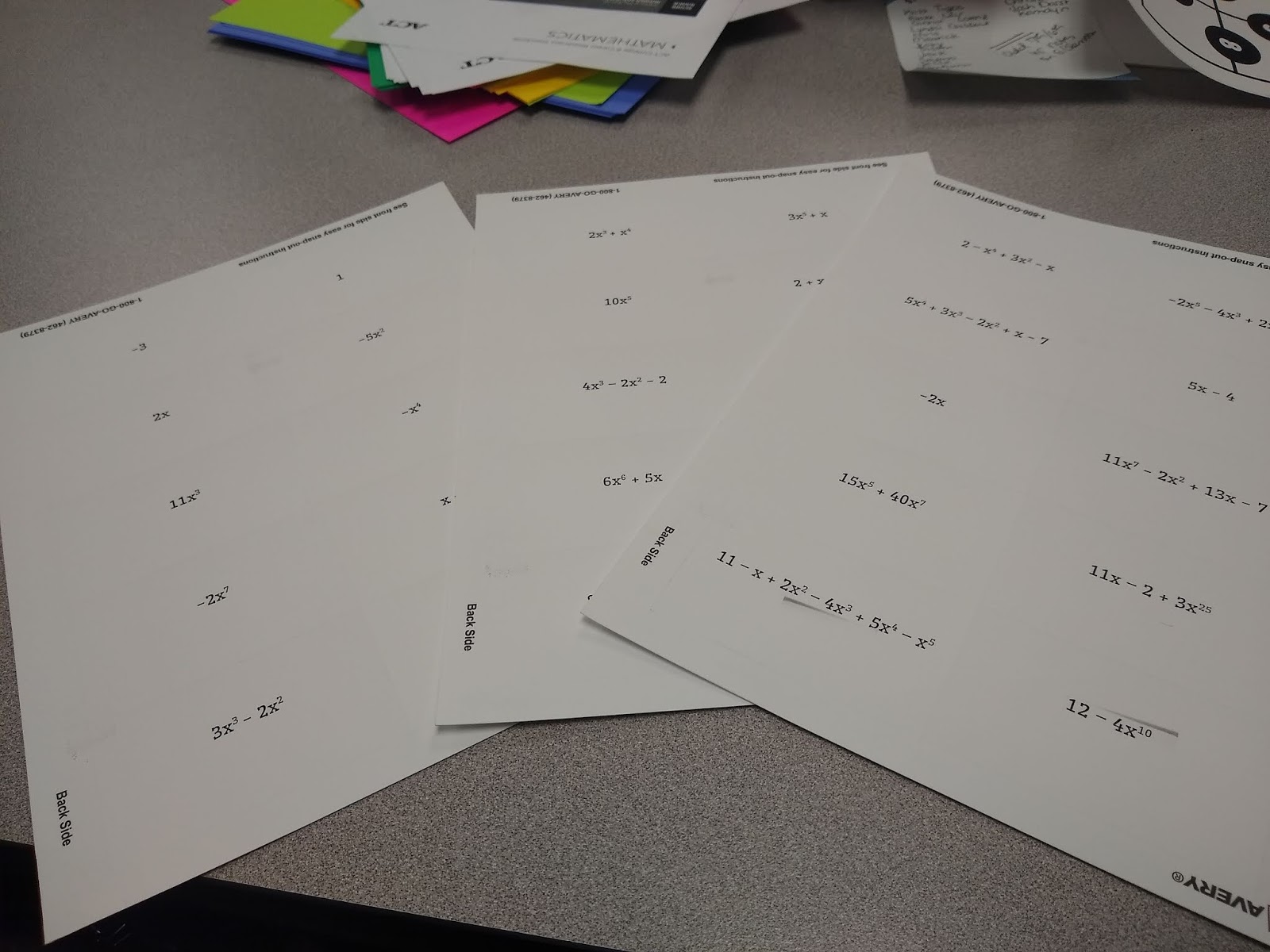
My biggest class this past year was 30, so I created 30 different polynomials for students to practice naming.
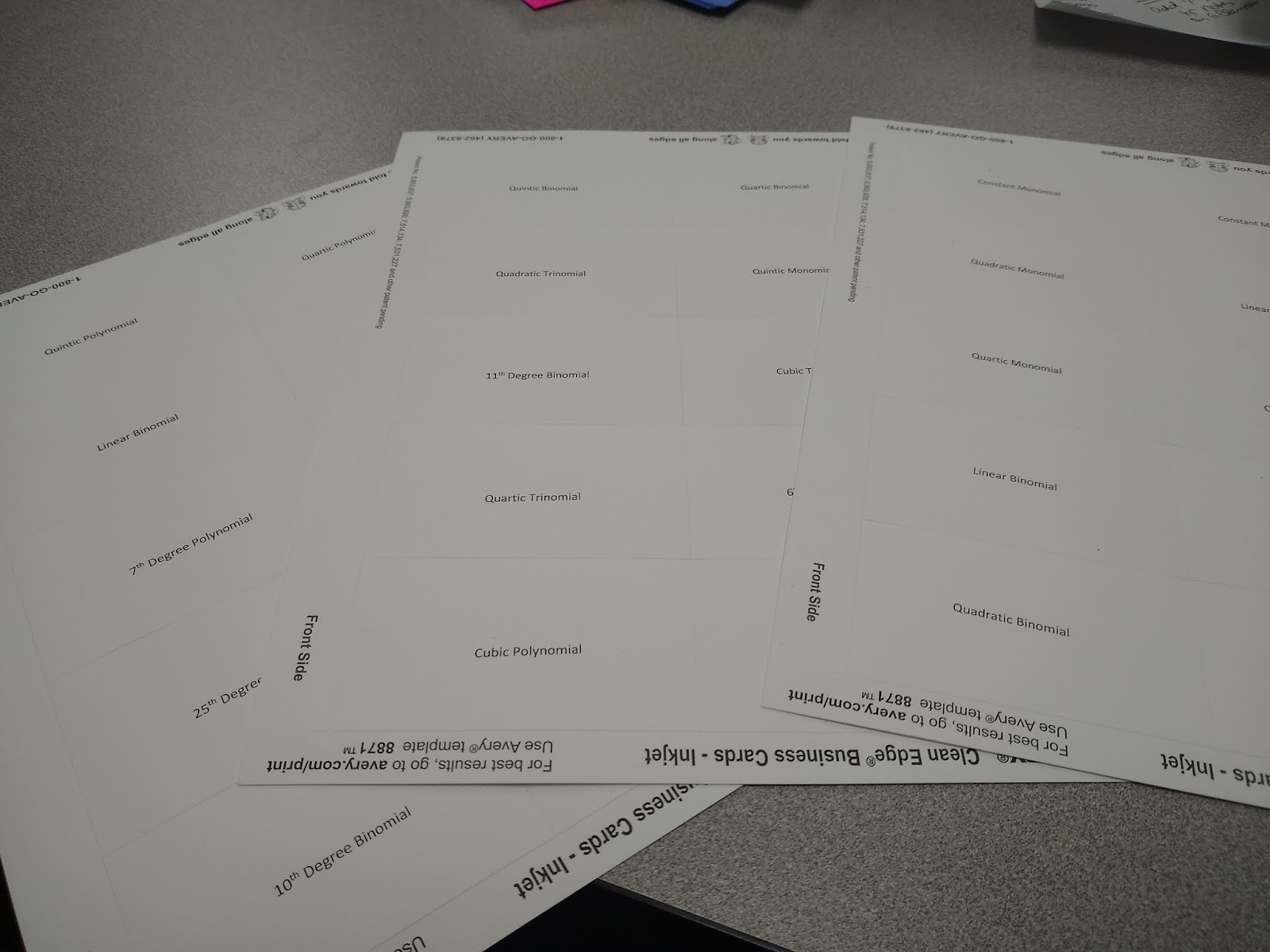
Here’s what a finished naming polynomials speed dating card looks like.
Front:

Back:
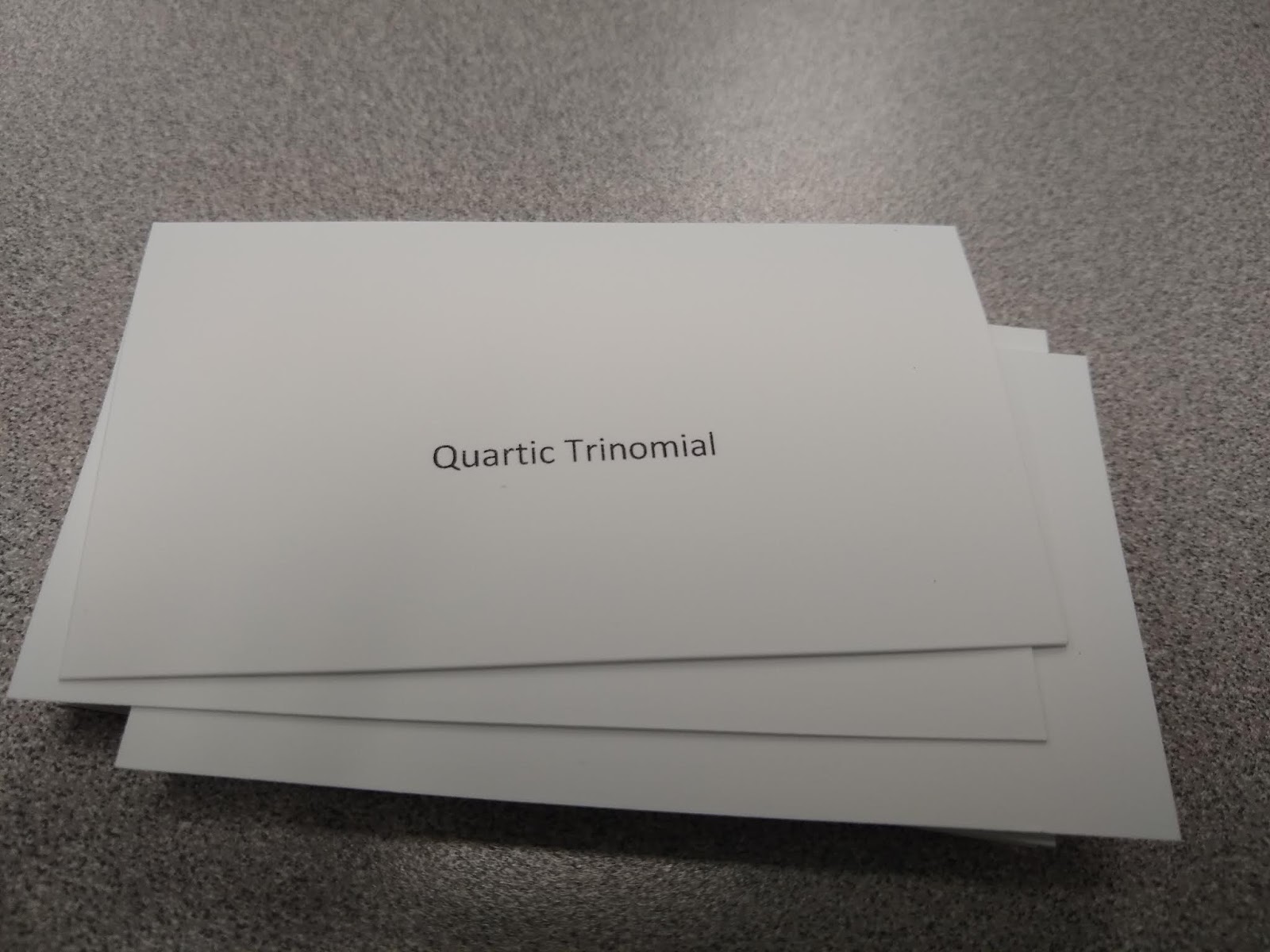
And, my favorite thing to share: action shots. I have a policy of never posting pictures with student faces on my blog to maintain student privacy. Students are always so engaged in speed dating activities, that it makes me so sad to have to cover up their faces. I want the world to know just how engaged students can look in math class! I guess you’ll just have to try it in your own classroom so you can see it for yourself!
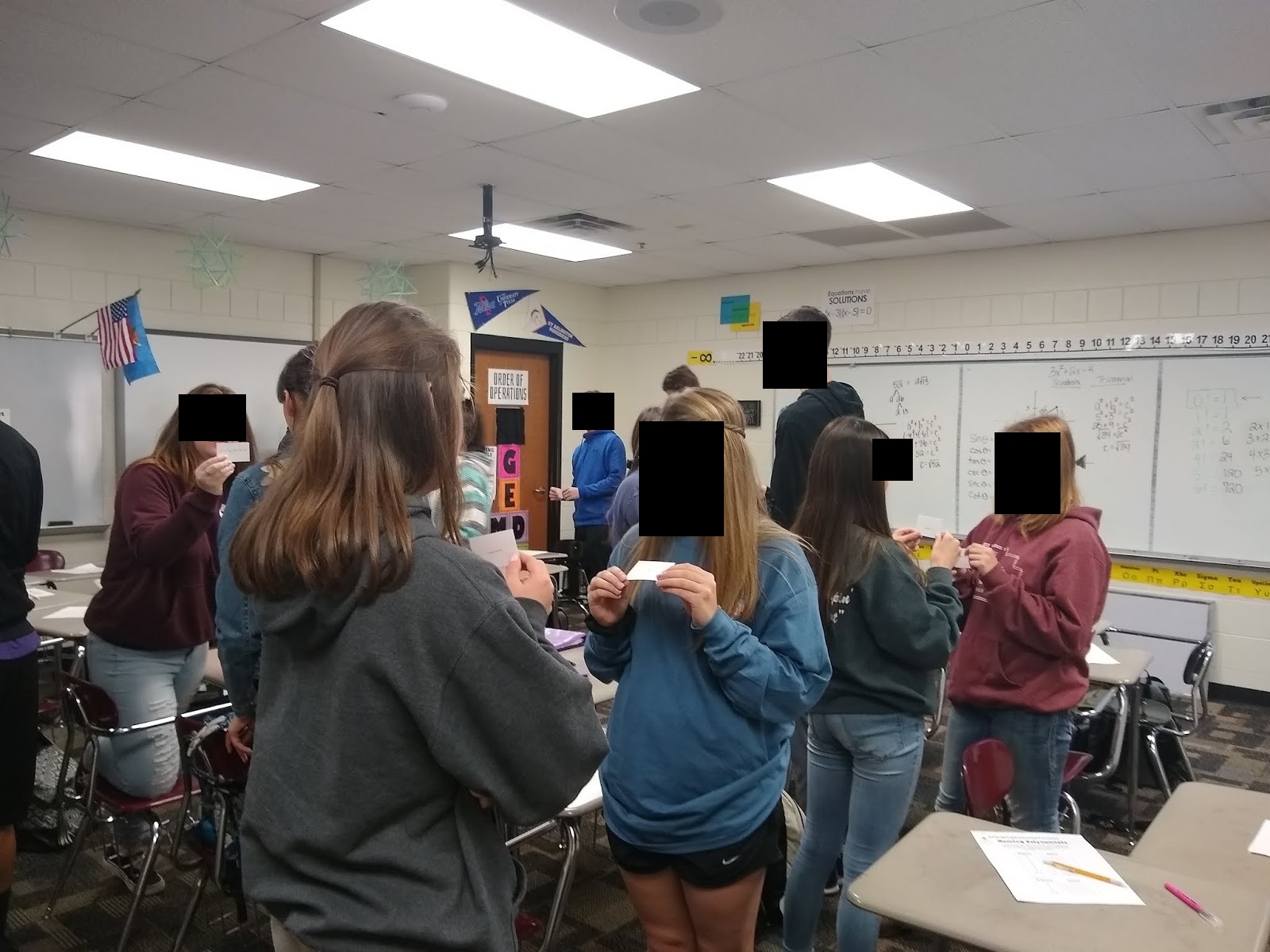

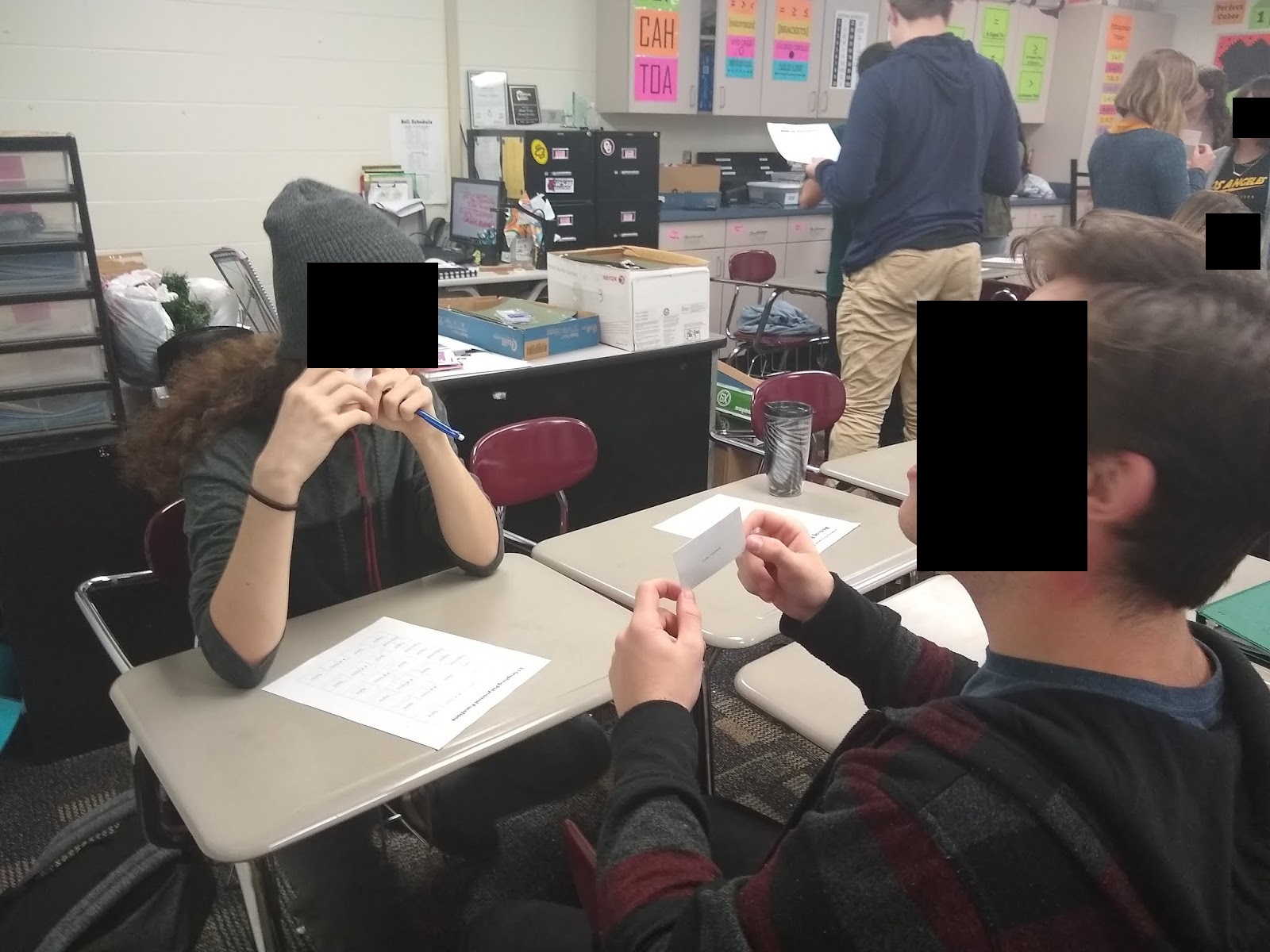
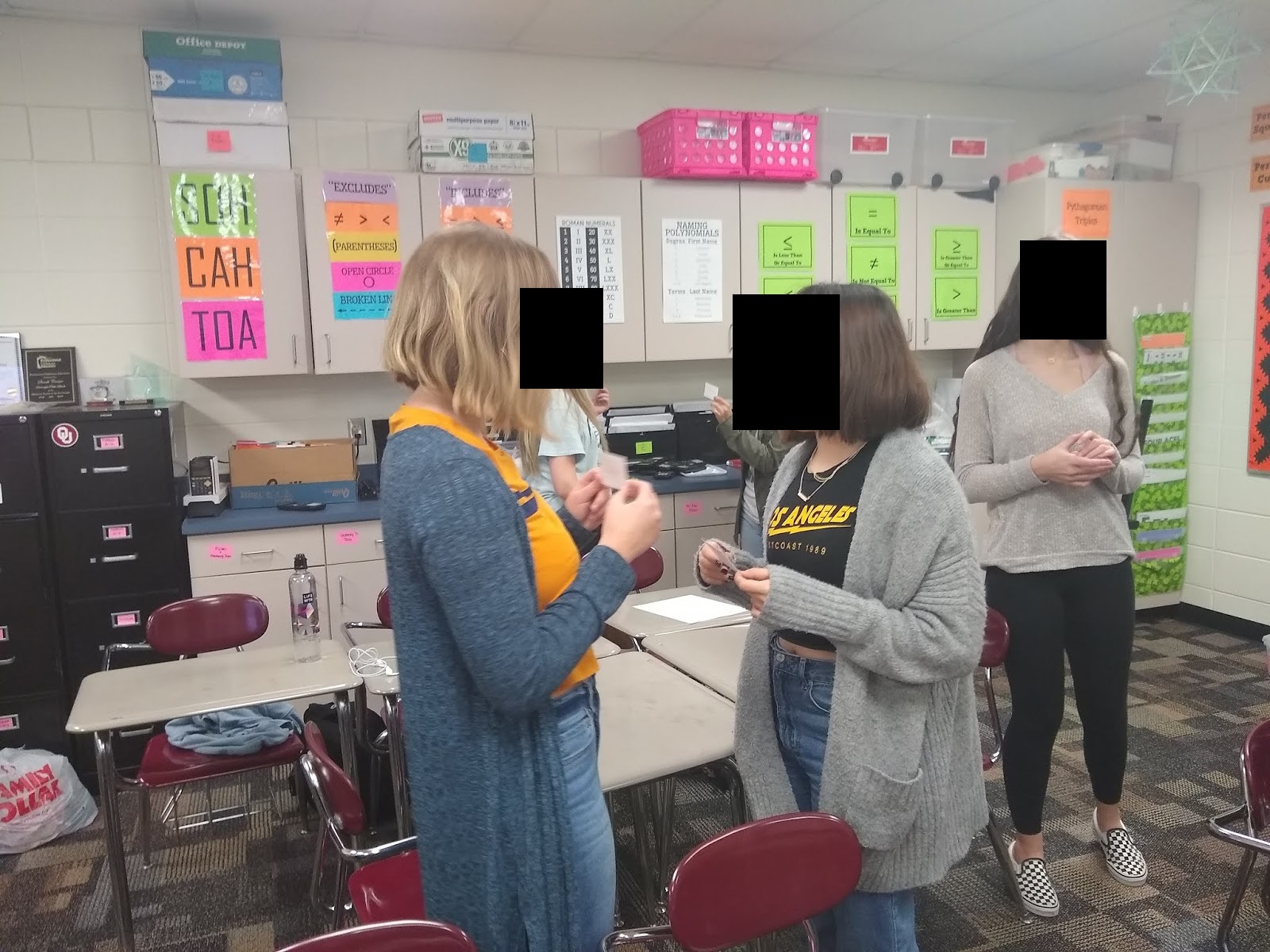
Naming Polynomials Speed Dating Card Files
Want to print your own set of speed dating cards for naming polynomials?
Click here to SAVE the file to your device.Naming Polynomials Speed Dating Cards (WORD)
1792 saves – 15.89 KB
Remember, these are formatted to fit printable business cards, but you could easily print them on regular letter sized paper and cut off the excess margins before cutting the cards apart.



